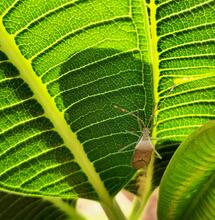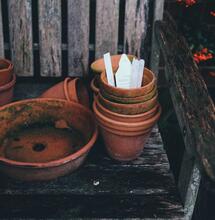Industrial Plant

Enormous, dense and sticky buds full of plentiful resin, a rather short blooming period and a medium plant size make this strain one of the indoor growers’ favourites for its abundant and qualitatively good yields.
You will forget that time goes by
The Dinafem seed bank rolled out yet another tremendous crossbreed derived from an Afghani and a Thai parent; a medium-sized, extremely easy-to-grow plant, with limited inter-knot distance, few branches and a large main stem. When flowers are growing, it doubles its size, thus widening the gap between lateral and central branches even further. It has been particularly selected to be grown indoors under lamps and produces large yields after a very short blooming period. Its Sativa/Indica ratio is 50/50. At least two or three distinct phenotypes can appear in the same garden, with clear differences in colour, quantity of pistils and smell, and in the final colour of the herb after drying. Indica traits are clear from the large quantity of dense resin drops that form along all branches, as well as from a remarkable main bud. Its taste and effect are slightly similar to those of an Afghani, but most influences derive from its Thai parent.
It is fresh and sweet to the palate, with a taste of lemon and spices. Effects are balanced between mind and body, without any bias towards either. It is therefore ideal for relaxation. It is also among the fastest and most productive plants on the market. Indoors it only needs between seven and eight weeks to ripen. Outdoors it can be harvested from late September to early October. Its indoor yield is around 625 g/m2, its outdoor yield exceeds one kilogram per plant in optimal conditions. Its low leaf-to-bud ratio eases trimming and reduces the time spent on plant care, in comparison with other more care-intensive strains. Industrial Plant is particularly suitable for commercial growers seeking high yields, but not at the expense of quality. Its only problem is that it is rather sensitive to botrytis. In a highly humid environment, fungal problems could arise, given its large bud size and poor resistance to attacks. In an outdoor environment, to avoid problems and make the most of it, we recommend growing it in temperate or warm climates.
Cultivation
Like all the other Dinafem plants so far tasted, all of our germinated Industrial Plant seeds sprouted in one to two days without any problem. The growth of this strain is uniform and the quantity of secondary branches and new buds is constant. It does not require a large quantity of nutrients, neither in its vegetative phase, nor during bloom. It is a rather strong and robust plant. As the blooming period is short, you need to be particularly careful not to cause any problems, as you will have no time to solve them. When the first root appears, it needs to be transplanted to a soil substrate. Within a short time span, after growing in pots of little less than one litre, it needs to be moved to larger pots of seven litres, as a minimum. The larger pots in which we grew this strain had an 18 l. capacity, with significant differences in the final weight of each plant. During the early two weeks of its vegetative phase, you need to apply a root enhancer twice. In the following two to three weeks, you need to apply a growth booster either once or twice. If the earth substrate used is sufficiently rich in nutrients, this plant will not need further feeding. After little less than one month, subject to the prior taking of cuttings for the purpose of selecting a mother, we induced flowering. Clones made from various seeds of Industrial Plant also rooted rapidly and did not lose vigour. If you take cuttings, they are usually good, but the quantity of clones that an Industrial Plant mother can produce is lower compared to that of other strains. When the plant photoperiod changes, plants immediately stop growing and inter-knot distance becomes shorter.
Soon, the early pistils will be visible, and their number and size will grow more and more. A small dose of bloom booster towards the middle of this phase will increase the production and quantity of trichomes. In a few weeks, buds will be rock hard and covered with shining THC crystals. In our case, when the flowers were ripe, we cut them and moved them to the drying area. A removal of salts twelve or fifteen days before harvest will produce a herb with a highly appreciable taste and colour. We encountered several phenotypes; within each of them, all individuals were rather homogeneous and, consequently, we could not make up our mind as to which one to pick as mother. Yield is the most remarkable characteristic of this plant, with individuals weighing 25 g minimum in pots of seven litres, right up to as many as 80 g in pots of eighteen litres. After drying and weighing, the herb only needs to be tasted. Its aroma and taste are light, with a citric aftertaste and spicy touches calling to mind hash. The large quantity of trichomes covering buds make this a special strain particularly suited for the production of all types of extracts. Its effect is not too strong, but pleasant and lasts long enough; it also produces an agreeable sense of cerebral and physical relaxation – so it is perfect for alleviating both the mind and the body. Text: TricomaTeam (tricomateam@gmail.com)



.png)